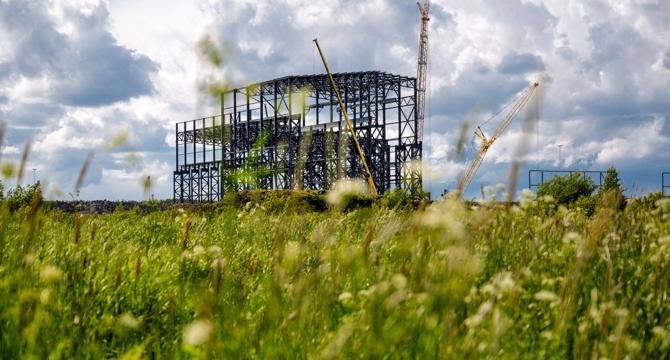TechnologyReview
1d
34

Image Credit: TechnologyReview
The world’s first industrial-scale plant for green steel promises a cleaner future
- Every year, nearly two billion metric tons of steel are produced on the globe, releasing carbon dioxide. Stegra, a Swedish company, has raised close to $7bn to build an enormous green steel plant in Boden by 2026 that turns iron ore into steel through green hydrogen produced from renewable energy. Stegra is a step forward to low- or zero-emission steel as a single steelmaking process accounts for around 8% of total global carbon emissions. Stegra opens up a new approach to making steel that can theoretically produce close to zero emissions.
- Stegra’s plant in Boden, northern Sweden, will use hydro and wind energy to produce hydrogen gas, which will then be used to extract the oxygen out of iron ore to create metallic iron—a vital process in steelmaking.
- The facility is the first industrial-scale plant in the world to use green hydrogen to process iron ore into steel and prove that it is workable at scale to help offset the industry’s huge carbon footprint.
- As the plant uses only hydrogen, Stegra needs to work out how to heat it to the necessary temperature for steelmaking, which adds to the challenges in the phased technology. The company is on track to begin production in 2026, initially producing 2.5 million metric tons per year and eventually making 4.5 million metric tons.
- Stegra needs to demonstrate that its plant is a viable business operation because while it aims to produce steel at the same cost as the conventional product, it will charge 20-30% more to cover the costs of constructing the facility.
- Many manufacturers, including Volvo, Mercedes-Benz and Ikea, have contracted to buy green steel. The European Parliament has approved a tariff on imported carbon-intensive products, including steel, known as the Carbon Border Adjustment Mechanism, which should bolster demand for green steel.
- Using green steel will require governments and individuals to accept higher initial costs since the metals will cost more than steel made from coal.
- Manufacturing costs will eventually need to come down for green steel to become cost-competitive with conventional steel. For this to happen, different technologies will be required to succeed.
- Stegra’s role is integral in proving that green steel can be manufactured at scale. Being the first-to-market, its performance will shape perceptions of green steel for years to come, says Jessica Allen, an expert on green steel production.
- The steel industry is a huge emitter of greenhouse gas, with around 8% of global carbon emissions attributed to the manufacturing process for steel. Stegra is working towards low- or zero-emission steel as it uses hydrogen produced from renewables to extract oxygen from iron ore to make steel, making it a vital step towards offsetting the industry’s huge carbon footprint.
Read Full Article
2 Likes
For uninterrupted reading, download the app